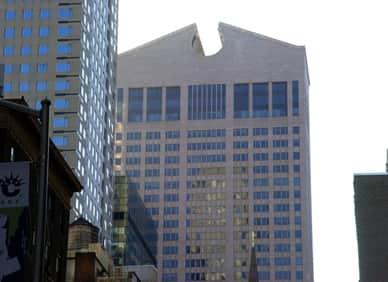AT&T Headquarters Building Labeled as Individual Landmark
Published on September 21, 2018 by Nick Walsh

The 37-story building at 550 Madison, also known as AT&T Corporate Headquarters Building, was completed in 1984 by Philip Johnson and John Burgee and is considered a benchmark of postmodernism as the first commercial skyscraper of its style. The building has a "Chippendale" roofline and pinkish-grey granite that helps it stand out among its Midtown Manhattan neighbors. The Landmark Preservation Commission (LPC) calls it "one of the most important postmodernist buildings in the world and it is one of Johnson/Burgee's most celebrated works to this day."
The landmarking announcement has come out from years of uncertainty surrounding the building exterior façade. Plans were revealed by SnØhetta to change the base of the skyscraper with glass. The proposal was met with a public outcry and a movement grew to help preserve the building after its lobby was dismantled last January.
The LPC recognized the importance of the AT&T Corporate Headquarters Building and labeled it as an individual landmark on July 31, 2018. "This is the building that established postmodernism as a legitimate architectural movement. It deserves to be preserved for future generations" said Frederick Bland, Landmarks Preservation Commission Vice Chair."
The ownership group consisting of Chelsfield, Olayan, and RXR Realty put out a statement after the landmark designation:
"We are proud that 550 Madison is now an official New York City Landmark, claiming its place in our city's architectural heritage. Ownership strongly supports the designation of the iconic office tower and applauds the Landmarks Preservation Commission's decision. Since acquiring the building, we have taken our role as stewards of this important building very seriously. We look forward to an ongoing dialogue with the LPC and other stakeholders to preserve 550 Madison's legacy as a commercial Class A destination in East Midtown, with smart and sensitive modifications to serve modern tenants."
